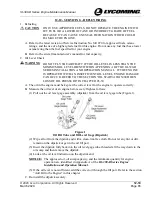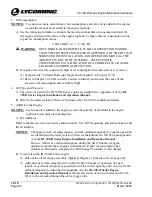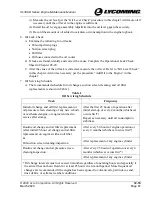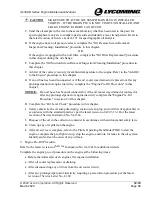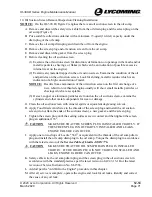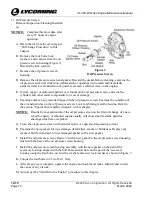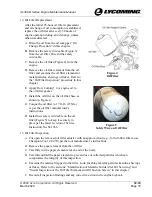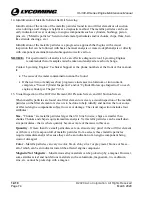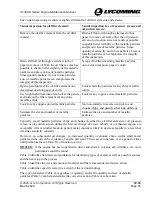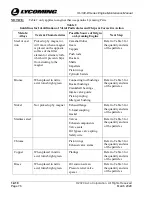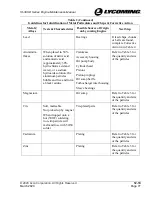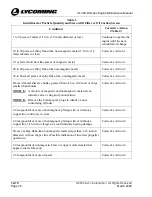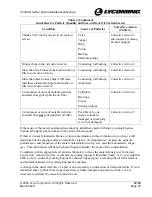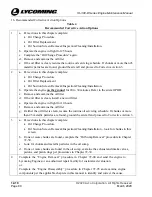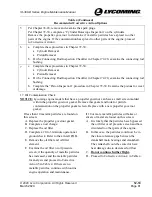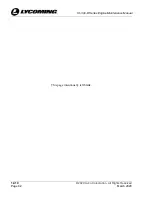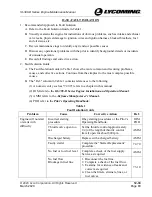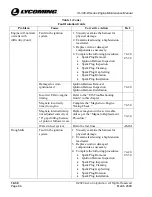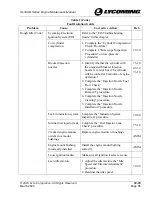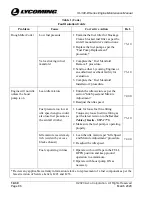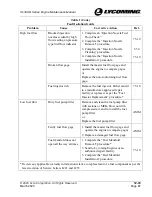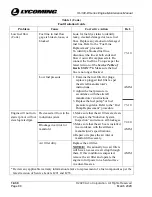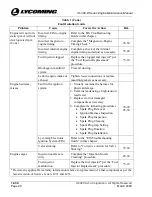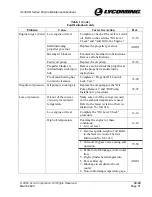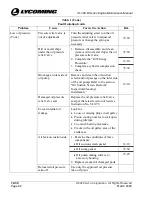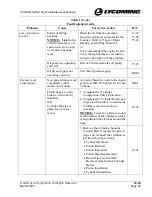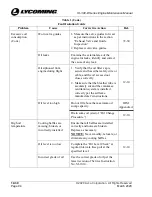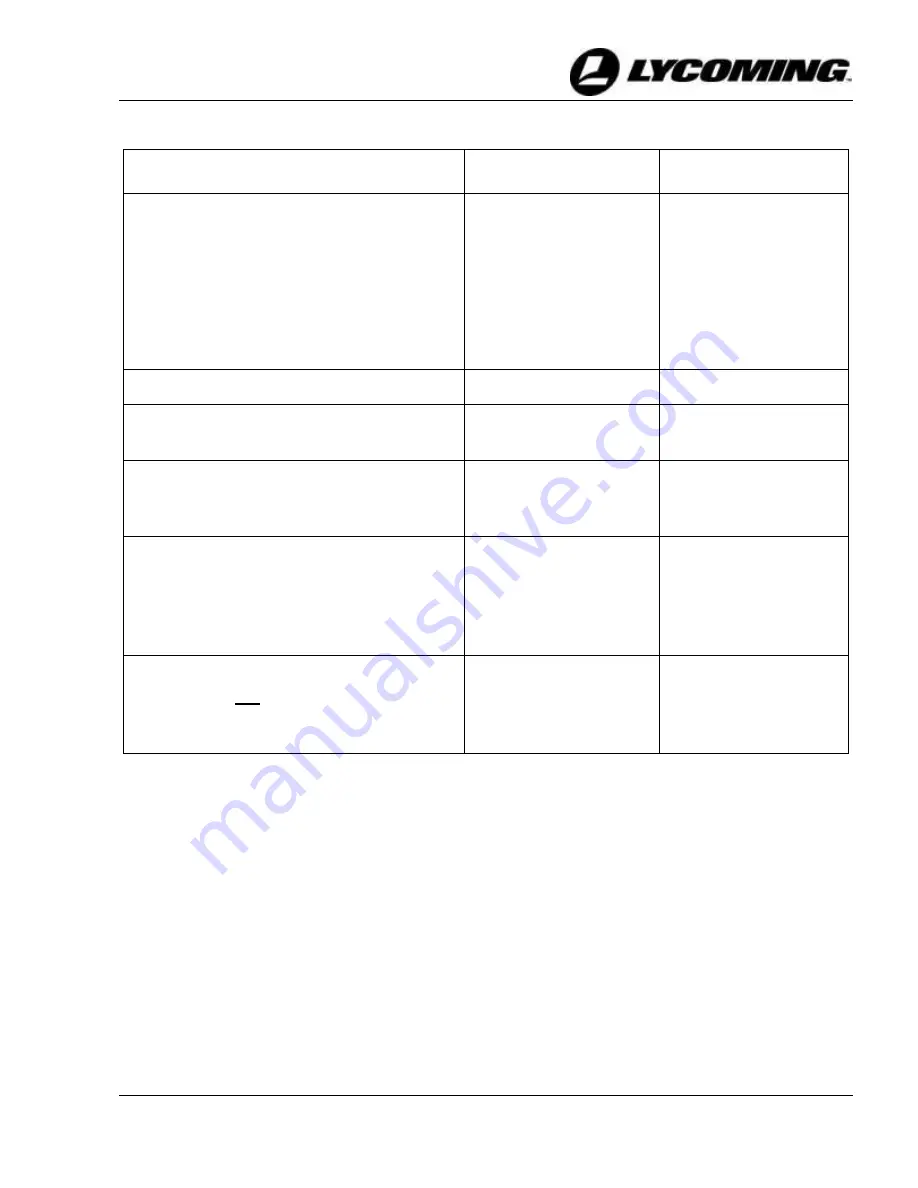
IO-390-D Series Engine Maintenance Manual
© 2020 Avco Corporation. All Rights Reserved
12-10
March 2020
Page 79
IO-390-D Series Engine Maintenance Manual
Table 3 (Continued)
Guidelines for Particle Quantity and Size on Oil or Oil Suction Screen
Condition
Source of Particles
Corrective Action
(Table 4)
Chunks (3/16-inch or larger) in oil suction
screen
Valve
Tappet
Ring
Piston
Bearing
Machining chips
Corrective Action 3
and contact Lycoming
Product Support
Bronze chips in the oil suction screen
Connecting rod bushing
Corrective Action 6
More than five bronze chips found in the oil
filter or oil suction screen
Connecting rod bushing
Corrective Action 6
More than three bronze chips AND more
than three aluminum chips found in the oil
filter or oil suction screen
Connecting rod bushing
and piston
Corrective Action 7
1/4 teaspoon or more of metallic particles
and metal has gotten past the oil filter
Cylinders
Bearings
Piston
Piston pin plugs
Corrective Action 4
1/4 teaspoon or more of metallic particles
and metal has
not
gotten past the oil filter
Possibly only one
engine cylinder is
damaged or spark plug
is worn or damaged
Corrective Action 5
If the cause of the metal contamination cannot be identified, speak with the Lycoming Engines
Technical Support, phone number at the front of this manual.
If there is unusual aluminum, bronze, or iron contamination in the oil, make sure you have a full
description of the engine model, serial number, history, oil temperatures, oil pressure, unusual
performance, and properties of the metal contamination (color, size, metallic/nonmetallic, shape,
etc.). This information will help Technical Support identify the cause of the contamination.
Coordinate with an appropriate oil analysis laboratory to have the material analyzed. For factory
new, factory rebuilt or factory overhauled Lycoming engines within their hourly or 12-year required
TBO cycle, if, contact Lycoming Engines Technical Support prior to sending the oil filter element
and metallic material to Lycoming Engines for analyses.
A change in the usual wear rate of a part is not necessarily an indication of imminent failure. It is an
indication that a cylinder borescope inspection, cylinder compression pressure check, etc. are
necessary to identify the cause for unusual wear.

